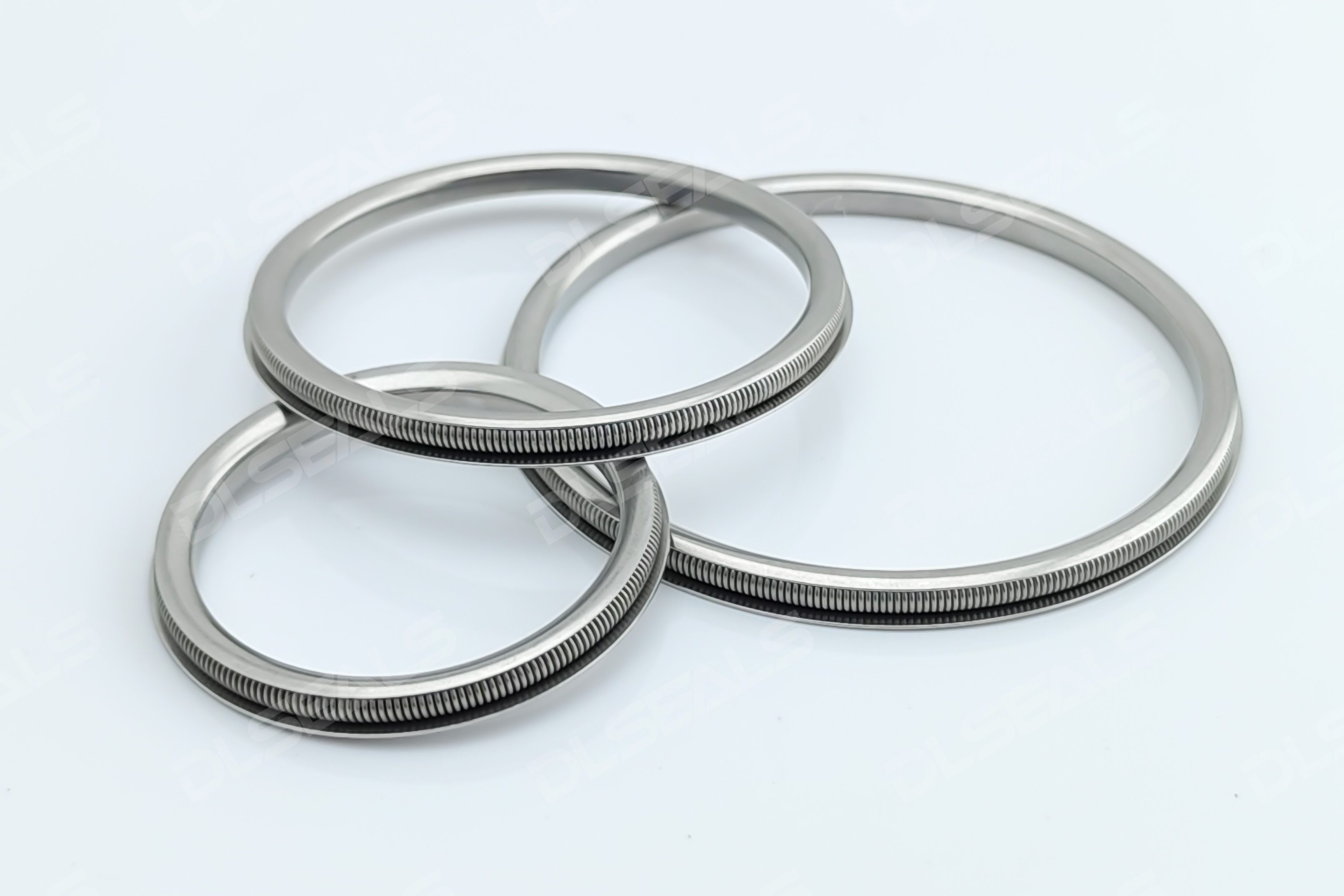
In critical aerospace systems—rocket engines, attitude control valves, and space station modules—metal seals perform three vital functions: containing cryogenic propellants (-269°C liquid helium), maintaining cabin pressure, and blocking cosmic particle ingress. Their reliability directly determines mission success and crew safety, requiring maintenance-free performance under extreme conditions: instantaneous transitions from 3000°C flames to -269°C cryogenics, intense radiation (>10⁶ rad/year in GEO), microgravity, and high-frequency vibration. This analysis examines aerospace metal seals through four dimensions: materials, structural mechanics, space validation, and emerging trends.
I. Extreme Challenges & Performance Metrics
Four ultimate challenges:
- Thermal cycling: -183℃ (LOX tank) ↔ 3000℃ (combustion chamber) causing embrittlement/creep
- Pressure shocks: 0→35MPa in 10ms (thruster valves) inducing micro-slip leakage
- Radiation degradation: >10⁶ rad/year particle bombardment accelerating aging
- Corrosive media: NTO/MMH bipropellants triggering intergranular corrosion
Key specifications:
- Leak rate: ≤1×10⁻⁹ mbar·L/s (per NASA-STD-5012 helium testing)
- Service life: >15 years (satellites) or >1000 cycles (launch vehicles)
- Mass reduction: ≥50% vs conventional seals
II. Material Systems: Space-Proof Alloy Matrix
Core alloys:
- Inconel 718: 100J impact toughness at -196℃, 620MPa@800℃ (LH₂ turbopumps)
- Ti-3Al-2.5V: Ductile at -269℃, 480MPa@400℃ (ISS oxygen lines)
- Haynes 242: NTO/MMH corrosion resistance, 550MPa@800℃ (thrusters)
- Mo-47Re: 420MPa@2000℃, >100 dpa radiation tolerance (nozzles)
- Nb-1Zr: 25% elongation at -269℃, 220MPa@1200℃ (nuclear propulsion)
Functional coatings:
- Solid lubricants:
- Gold plating (0.5-2μm): μ=0.1 in vacuum, prevents cold welding
- Sb₂O₃-doped MoS₂: Stable at 350℃ under irradiation
- Barrier layers:
- Ion-plated aluminum: 10× longer NTO resistance
- Laser-clad ZrO₂/Y₂O₃: Withstands 3000℃ gas erosion
III. Structural Innovation: From Elasticity to Topology
Landmark designs:
- Artemis lunar lander: Inconel 718 C-seal + Au/MoS₂ gradient coating, achieving <5N·m breakout torque at -183℃ LOX (conventional >30N·m)
- JWST cryocooler: Laser-textured Ti-3Al-2.5V bellows, leak rate <5×10⁻¹¹ mbar·L/s at 7K
IV. Space Validation Protocols
Testing regimes:
- Thermal vacuum cycling (ESA ECSS-Q-ST-70-04): -196↔150°C, 50 cycles, <10% leak drift
- Random vibration (NASA-STD-7003): 20-2000Hz, 20Grms, 3-axis structural integrity
- Proton irradiation (ASTM E521): 5MeV, 10¹⁵ p/cm², >85% tensile strength retention
- Propellant exposure (MIL-STD-1522A): 70℃ NTO/MMH immersion ×30 days, <1mg/cm² mass loss
Monitoring tech:
- Quadrupole MS (Pfeiffer PrismaPro): 10⁻¹³ mbar·L/s detectability
- Robotic helium sniffer (ESA): 0.1mm leak localization
- Embedded FBG sensors: Real-time strain monitoring (ISS hatch)
V. Engineering Milestones
- SpaceX Raptor: Laser-textured Haynes 242 C-seal sustains <1×10⁻⁹ mbar·L/s leakage after 50 reuses under LOX/CH₄ cycling (-162↔-161℃, 300bar)
- ISS docking system: Dual-pressurized metallic O-rings achieve 16-year zero-leak operation with <0.1Pa/day pressure decay
- Voyager RTG: Nb-alloy knife-edge seal + ZrO₂ TBC withstands 1100℃ decay heat & micrometeoroids over 45 years (22B km)
VI. Emerging Frontiers
- Smart materials:
- NiTiNb shape-memory alloys: Autonomously compensate wear at -100℃
- Microencapsulated GaInSn: Self-healing cracks via liquid metal flow
- Additive manufacturing:
- Topology-optimized lattices: 40% mass reduction with equivalent stiffness
- Gradient WC-Inconel structures: 2000HV hardness at interfaces (LPBF-fabricated)
Epilogue: The Atomic-Scale Guardianship
From Apollo’s metallic O-rings to JWST’s cryogenic seals, aerospace sealing history epitomizes the trilogy of material genomics, structural topology, and extreme validation:
- Materials: Nb-alloys conquer -269℃ ductility; Mo-Re alloys endure 100 dpa radiation
- Structures: C-seal arches achieve 3000MPa contact pressure (beyond material limits)
- Verification: 10⁻¹³ mbar·L/s detection ≈ identifying single helium atom escape from a football field
Future missions face lunar dust abrasion, Martian salt fog, and nuclear transmutation. Next-gen seals integrating quantum sensing leakage monitors and AI-driven material design will become the ultimate safeguard for human deep space exploration.
[DLSEALS kindly Reminder] Sealing issues? Turn to DLSEALS! As a sealing component manufacturer, we specialize in customizing sealing components, providing a full range of services from design, research and development, production, testing, and more. If you have more information you'd like to know, feel free to contact us directly. DLSEALS's product experts are dedicated to serving you!
